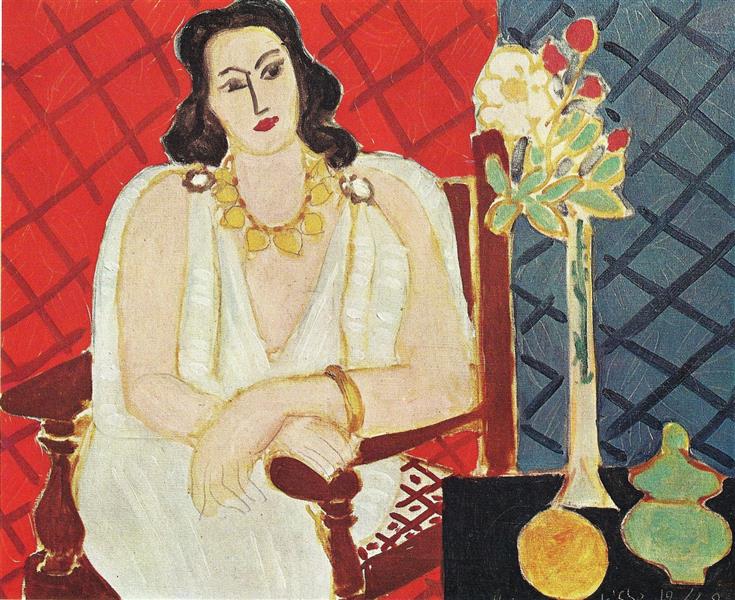Description
Henri Matisse, one of the giants of artistic modernity of the 20th century, is known for his bold use of color and his inventiveness in composition. "Idol" (1942, 74x60 cm) is a painting that exemplifies these distinctive traits, where we can observe a composition that unites the symbolic and the abstract in a vibrant and energetic dialogue.
At first glance, "Idol" offers a feast of color and shapes that unfold on the surface of the canvas. The work is a celebration of Matisse's chromaticism, with his characteristic intense reds, deep blues, and luminous yellows, all orchestrated in a visual symphony that is irresistible to the senses. The use of color in this work is not merely decorative; it is intended to evoke emotions and moods, to create an atmosphere that transcends the merely visual.
The composition of "Idol" is a testament to Matisse's mastery in organizing pictorial space. In the center of the work, a figure stands out whose simplified and stylized design is reminiscent of the forms we can find in African tribal art, a well-documented influence in Matisse's work. This central figure, which could be interpreted as a deity or an idol — hence the title of the work — dominates the space of the painting without overloading it, thanks to a balanced arrangement of the elements that surround it.
On both sides of the central figure, vegetal and geometric forms flow organically, evoking nature and fertility, recurring themes in the artist's work. These forms, although abstract, are clearly delineated and full of life, suggesting an earthly paradise where the central figure could be a protective or revered entity.
The background of the painting is not merely a passive setting; it is active and vital, a battlefield of colors and shapes that complement and enhance the central figure. Intricate patterns and textures can be observed, giving depth and dynamism to the composition. This interaction between figure and background is typical of Matisse and is a demonstration of his ability to maintain balance and tension within his works.
The historical context of the creation of "Idol" is also crucial for its understanding. Painted in 1942, during World War II, the work can be seen as an imaginary refuge, an escape from the grim realities of its time. Matisse, who spent much of the war in Nice, continued to create art that radiated vitality and optimism, an almost defiantly bright response to the darkness of the era.
"Idol" also fits into Matisse's transition to his last creative period, which would culminate in his famous paper cut-outs. In this painting, the first signs of his interest in the simplification of forms and the purity of color, which would become the distinctive marks of his later works, can be detected.
In summary, "Idol" is a work that encapsulates the essence of Henri Matisse's artistic genius. Through his masterful use of color, his balanced composition, and his deeply evocative symbolism, Matisse invites us to a world where beauty and spirituality coexist harmoniously. This work is, without a doubt, a sublime example of how art can serve as a refuge and a source of renewal in difficult times.

